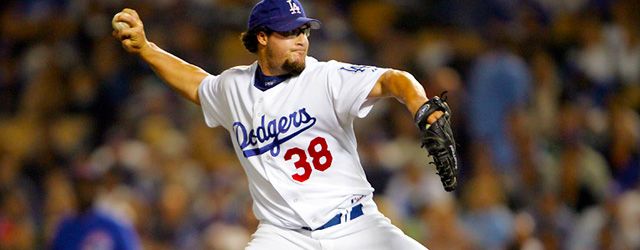Today’s guest post comes from Mike Penn. Mike is a former assistant coach for the University of Michigan, where he worked with the pitching staff and outfielders. A right handed pitcher, Mike spent his college career at the University of Michigan and was then drafted by the Kansas City Royals in the 11th round of the 2005 MLB Draft and spent five years in the minor leagues with the Royals organization. He currently coaches at Dexter High School in Dexter, MI.

Why is the change-up so important?
In my opinion the best pitch in baseball is the change up. Why? Because it is the only pitch that is designed to look exactly like another pitch. From command, to location, to velocity everyone knows that the fastball is the key to pitching. Everything is built off of it. But don’t take my word for it. Here is what Greg Maddux, 300+ game winner, has to say:
“I try to do two things: locate my fastball and change speeds. That’s it. I try to keep as simple as possible. I just throw my fastball (to) both sides of the plate and change speed every now and then. There is no special food or anything like that, I just try to make quality pitches and try to be prepared each time I go out there.”
Maddux was well known for his ability to disrupt the timing of hitters and creating different arrival times for the hitter. This disruption of timing is critical to the success of the pitcher and the change-up is one way to do this. The key to a good change-up is to sell it to the hitter. He must believe that a fastball is coming. When pitcher adjusts his delivery or arm speed it tips off the hitter that something other than a fastball is coming. Preventing this change in delivery by a pitcher is critical.
So if everything is keyed off of the fastball and the change up is designed to look like the fastball, its seems as though it is a pretty important pitch. Additionally, there are many debates on when a kid should throw a curveball or slider, but I have never heard anyone debate whether or not a little leaguer should throw a change-up. Reason being is there is no stress on the arm. However, the change-up is a pitch that, other than the grip, is rarely taught and developed.
Developing a Change-up
In an earlier post, change-up grips were discussed. Letting the grip do the work is key to this pitch. However, one tip that helped me in my career was long tossing with the change-up. At the University of Michigan, and now at the high school program where I coach, we have our players warm up properly and then work back in to a distance of 90 feet. At 90 feet, the player continues to use his crow-hop to throw, but this time he grips the ball with his change-up grip.
Some things you will notice:
- It is tough to throw a a change-up a long distance.
- You can’t fake it. Throwing a change-up at a longer distance will force you to accelerate your arm and will not allow you to decelerate in an attempt to take off velocity.
- You will see the ball flight and action. A good change-up will seem to have a parachute effect and die as it reaches its target. You will also see if it fades, cuts, or stays straight.
- The release point will be critical. Pitchers who have a tendency to release their change-up too early will see an upward trajectory. By long tossing, this upward trajectory is magnified and provides the pitcher with instant feedback on a poor release point.
Things to focus on:
- Moving your feet will ensure that you keep your arm speed up. It’s tough to slow your arm down after shuffling your feet (or crow-hopping) to gain momentum.
- Maintaining arm speed is critical. Allow the grip to do the work. Learn to throw your change-up with confidence.
- Release out in front. When long tossing with the change-up it is easy to try to “arc” it to your partner. This causes you to alter your release point. Who cares if you bounce it or it doesn’t make it all the way. After all, it is a good way for your partner to get some short hop practice.
Here are some basic sequences for you to try as you tinker with your change-up. Don’t be afraid to make changes and always work to make it better.
- Throw 10-15 change-ups in a row
- Use an alternating sequence of one fastball then one change-up
- Throw 2-3 change-ups then a fastball
Best of luck this year!
Leave a Reply